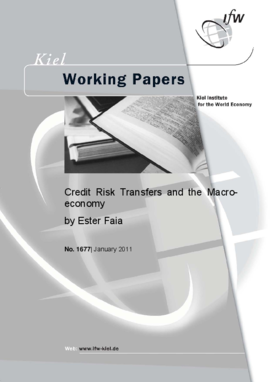Autoren
Erscheinungsdatum
JEL Classification
Schlagworte
The recent financial crisis has highlighted the limits of the “originate to distribute“ model of banking, but its nexus with the macroeconomy and monetary policy remains unexplored. I build a DSGE model with banks (along the lines of Holmström and Tirole [28] and Parlour and Plantin [39]) and examine its properties with and without active secondary markets for credit risk transfer. The possibility of transferring credit reduces the impact of liquidity shocks on bank balance sheets, but also reduces the bank incentive to monitor. As a result, secondary markets allow to release bank capital and exacerbate the effect of productivity and other macroeconomic shocks on output and in.ation. By offering a possibility of capital recycling and by reducing bank monitoring, secondary credit markets in general equilibrium allow banks to take on more risk.






